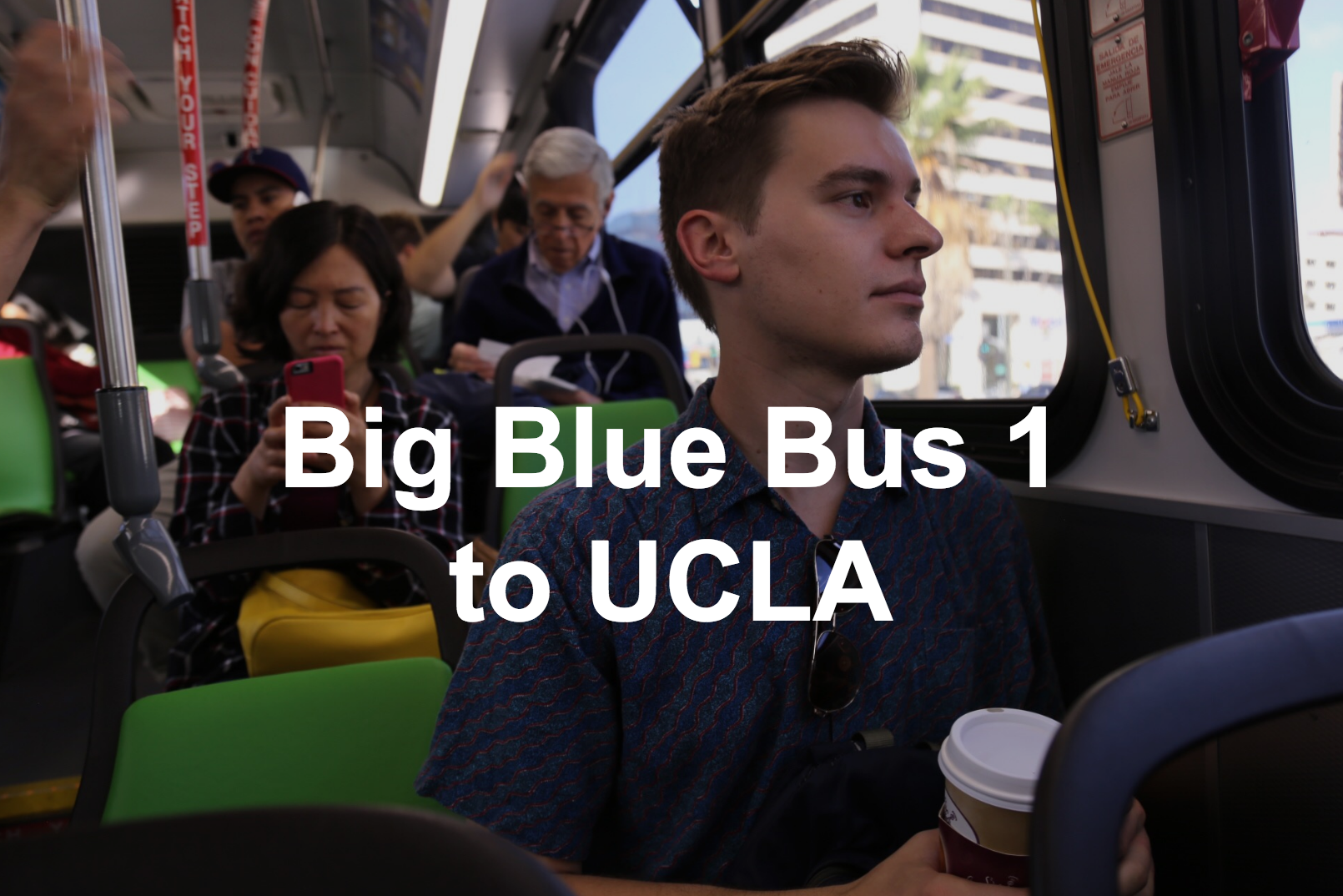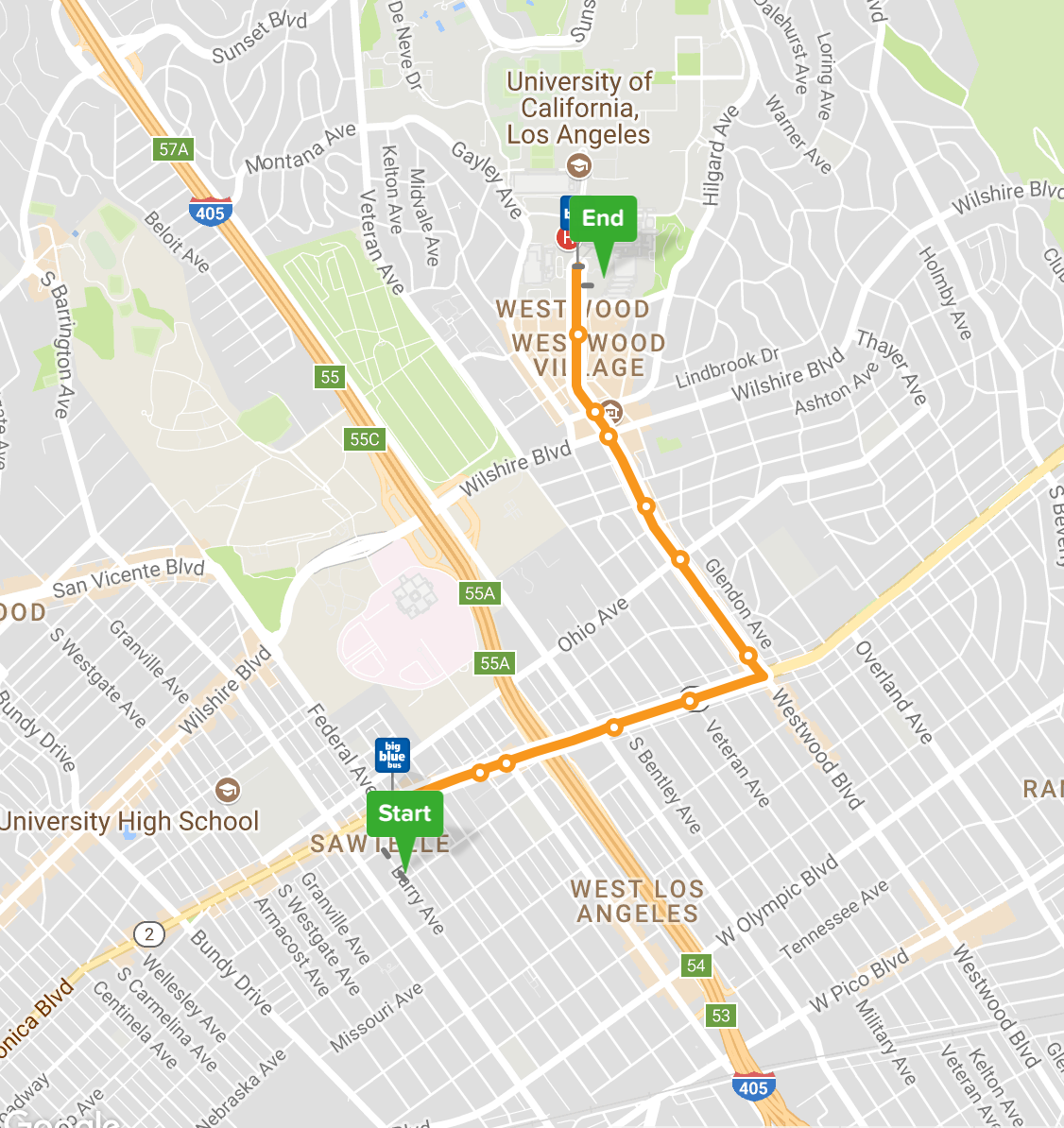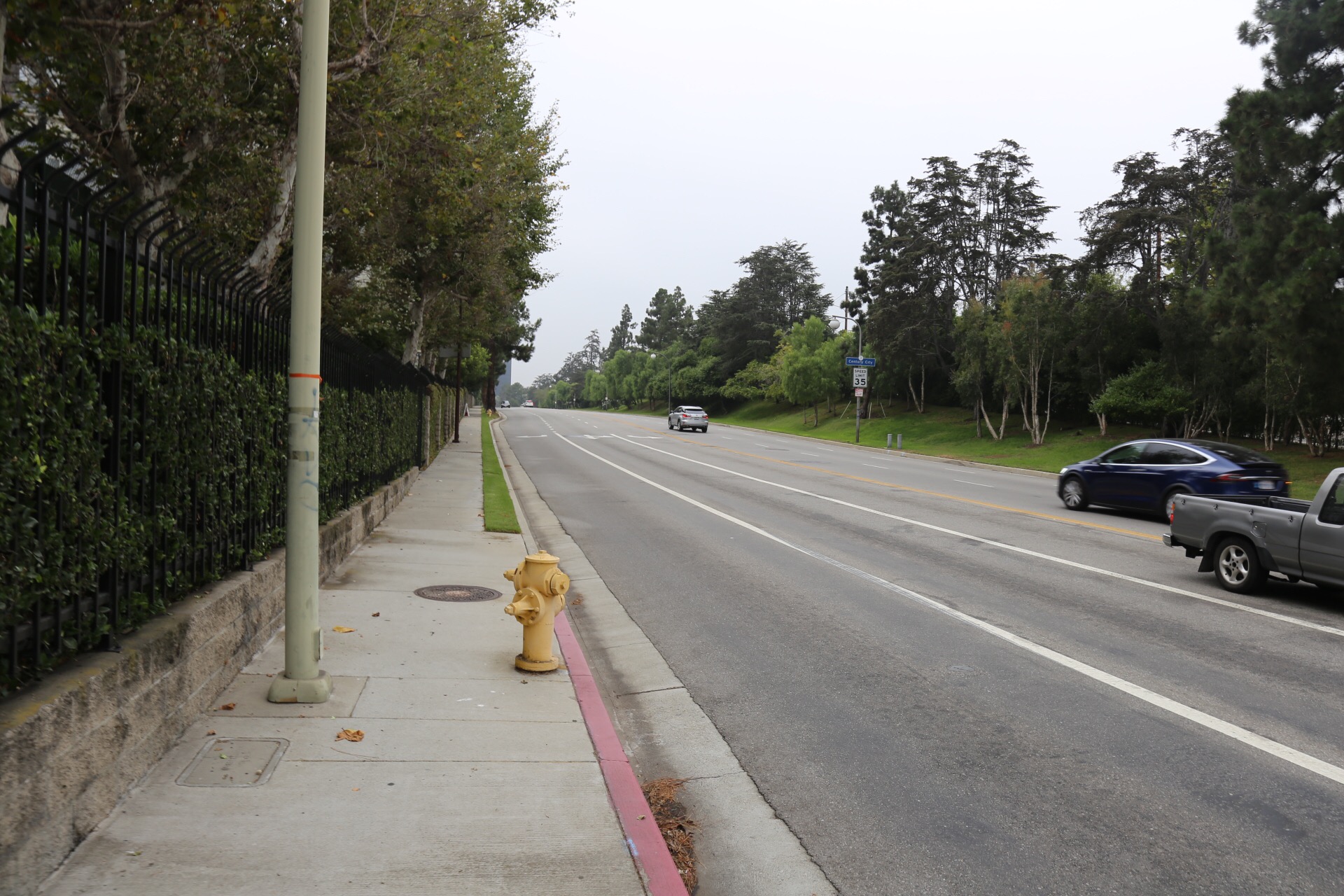Better off on the bus.
It's 7:30 AM and I walk about twenty minutes from the Bundy Expo Line stop to meet up with Max Cabaj who moved to his apartment off of Barrington and Santa Monica Boulevard about a year ago after completing his undergrad at USC. Despite living on the Westside, which sometimes has the reputation of being a transit desert, Max commutes the 2.5 miles to his cardiac research lab at UCLA each day via the Big Blue Bus. For Max it isn't a necessity, but a choice; he has had a car since moving to the neighborhood but Max finds it easier to leave the car at home. The same is true for many of his colleagues, "Most of my coworkers live in the Westwood area so they walk or bike or they live in Culver City or Palms where there are a lot of buses that go up Sepulveda or Westwood. Actually, a lot of people in my building take the bus there. Parking is $80 a month at work."
“Most of my coworkers live in the Westwood area so they walk or bike or they live in Culver City or Palms where there are a lot of buses that go up Sepulveda or Westwood. Actually, a lot of people in my building take the bus there. Parking is $80 a month at work.”
While walking two blocks to the Big Blue Bus stop, Max talks about how quickly this part of town grew on him, "I actually really like my neighborhood. It's very walkable. There are tons of restaurants and shops; there a Ralph's and a Trader Joe's withing walking distance...Sawtelle is like 0.4 miles away." An example of the access to nearby shops is the corner bagel shop where we stop to grab a coffee. Located in a strip mall with no available parking, we realize it would have been quite an ordeal with a car. While waiting in line, he jokes that the bus was an obvious choice compared to "having to pay to park at my own job," but it makes sense when you consider how many people drive on and off UCLA's campus. UCLA states they have 43,301 students enrolled and 4,300 on staff, not including the hundreds of contracted employees that keep the school running on a daily basis that's roughly 47,000 people at one location, and that much parking on prime L.A. real estate isn't cheap. Steep parking prices are an essential tool that allows dense job centers and businesses to prevent a complete traffic standstill. However, it isn't acceptable to price people out of parking and not provide a viable alternative, and that is where the Big Blue Bus 1 comes in, which Max describes as "a direct shot" to work.
“UCLA states they have 43,301 students enrolled and 4,300 on staff, not including the hundreds of contracted employees that keep the school running on a daily basis that’s roughly 47,000 people at one location, and that much parking on prime L.A. real estate isn’t cheap. ”
With Max's morning coffee in hand we walk one block to his stop and he adds, "my TAP card is $33 a quarter for unlimited taps on the blue Santa Monica's Big Blue Bus and green Culver City Bus." I ask him if growing up in Boston has played a role in his transit experience while living here: "I think I that's part of why I am very inclined to take it in LA. I think that I grew up with the idea that taking the bus or the train is very normal; just because it often is the most efficient way of getting around the city there. I feel like I seek it out often, whereas people from other parts of the country may not." Even with his transit history, Max was surprised about the ease of taking the bus to work on the Westside. "I think it's surprisingly very good here. You just have to spend ten minutes looking it all up. I think that people on the Eastside are more used to it, having more rail lines running through gives people more wiggle room, people are down to take the train but not take the bus. People think it's a hassle even though it's really not...this bus comes every 10 minutes."
“For the longest time all I wanted was to have a car in LA because it’s just the thing people do...but the end result was I was paying $110 a month for car insurance and my car just sits, and I’m paying $1,200 a year to insure a car I barely drive”
After waiting just a few minutes the bus came on schedule, and we receive a warm "Good Morning" greeting from the driver. As we pass under the 405 I ask Max how often he uses his car: " I would say my car is vacant about five days out of the week unless I have to go somewhere on a weeknight across town or something. If I'm going to meet up with a friend sure, I'll use it, but to go to the store I walk half the time because I'd rather not lose my parking spot." His car use has reduced to the point where he has considered selling it numerous times, "For the longest time all I wanted was to have a car in LA because it's just the thing people do...but the end result was I was paying $110 a month for car insurance and my car just sits, and I'm paying $1,200 a year to insure a car I barely drive...eventually I switched insurance to a pay-by-the-mile service called MetroMile. I pay a flat rate every month and then I pay six cents per mile. My bills are now about fifty to sixty bucks...It's this little device you plug in your car, it monitors where you drive...it has these stats, they text me when I'm on a street cleaning spot."
We jump off at Westwood and La Conte Avenue for a mere two-minute walk to his work. As we make our way to campus we talk about how the future purple line will make coming to Westwood increasingly easy. The subway won't make or break Westwood as a pedestrian-friendly area. Improvements in street crossings like the diagonal scramble are helping facilitate a safer experience. As Max explains, the stigma many have about the bus keeps transit mobility stunted even if it is the best option. He has been lucky enough to pay $10 a month to get to work, though most Angelenos would rather drive, no matter the cost.
“my TAP card is $33 a quarter for unlimited taps on the blue Santa Monica’s Big Blue Bus and green Culver City Bus.”
Unfortunately, Max is moving soon and is a little nervous he won't be able to find an apartment that offers the same level of transit access as his current set-up: "just under half an hour, door to door." It is unfortunate that, due to the sprawling nature of the city, one street can be a transit dream and another just a few miles away can be a nightmare - a problem all Angeleno's with a commute share. If you ask anyone in LA what is on their mind when deciding where to move, no matter the means, transit is often near the top. If only we had a more interconnected system that could reliably move people around...perhaps one day we'll get there.
Big Blue Bus route 1. Provided by CityMapper

















